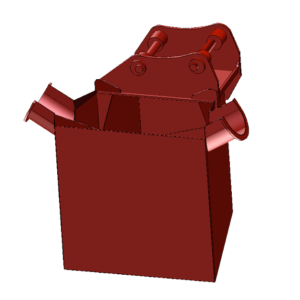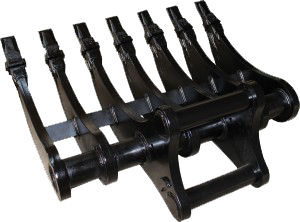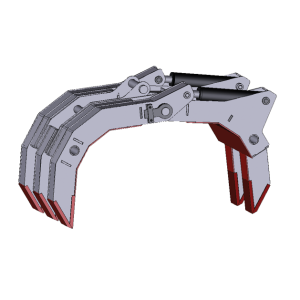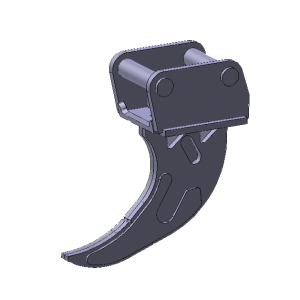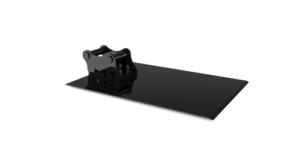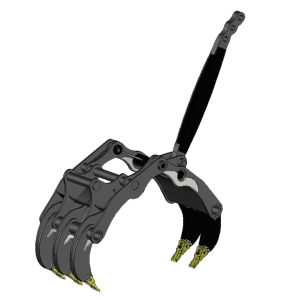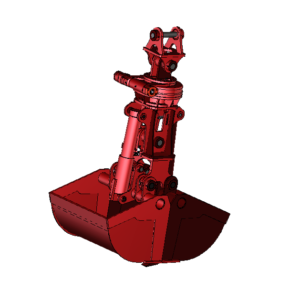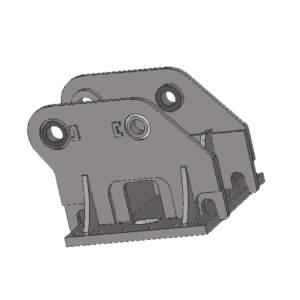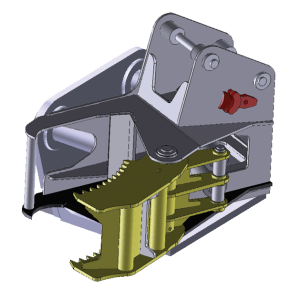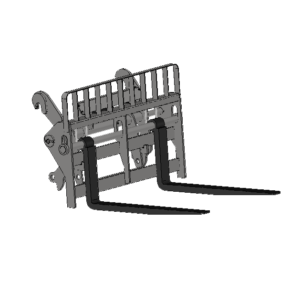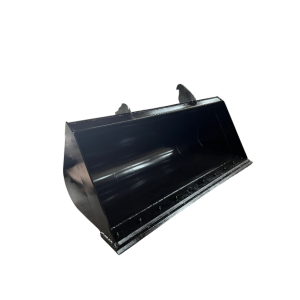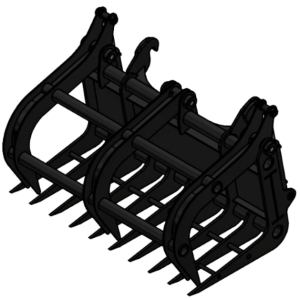We love getting new toys at Masterhitch; they help us provide quality products to our customers. Profile cutting is an important part of plant engineering, and it is integral that we have a machine that is able to cut quickly and with great precision in order to keep up with our standard of work. That is why we are so excited to have our new Kerf RUR 2500 plasma cutter. In this post, we’ll cover what profile cutting is, the different methods that can be used, and what our new machine is capable of.
WHAT IS PROFILE CUTTING?
Profile cutting is the process of following an outline on a piece of material (usually metal) to cut out the shape of a product, or part. Much like you could trace your hand onto a piece of paper, the machine follows the outline from the design software to cut the shape from the sheet. It is a CNC (Computer Numerical Control) machine, meaning a computer program controls the cutting process. This ensures that the cut is as high quality as possible. Parts are cut in a 2D fashion out of large metal plates of varying thickness, but certain types of machines have to be used to cut larger thicknesses. Masterhitch use profile cutting for many different buckets and attachments because of the high quality finish it produces.
OXY-FUEL CUTTING
Oxy-fuel cutting is one of the original methods of plate cutting, dating back to 1903 with the invention of oxygen-acetylene welding. It was shortly after this in 1904 that the first oxy-fuel cutting torch was born, and the process has remained largely unchanged to this day. The process uses an oxygen jet to cut through materials such as mild and low alloy steel, and can even be used for weld preparations. The process is as follows:
- A fuel gas flame brings the material up to its ignition temperature (816oC for steel)
- A jet of oxygen (at least 99.5% pure) is blown onto the heated spot
- The oxygen jet oxidises the metal, and as the torch moves it creates a narrow cutting kerf, splitting the material
The quality of the cut depends on the surface condition of the material, cut velocity, and thickness of the plate. All low-alloy steel can be cut with this process, and an oxy-fuel torch can reliably cut any plate from a thickness of 3mm to 900mm; up to 900mm, there is no alternative to oxy fuel cutting.
Oxy-fuel profile cutting is a slow process, and takes a lot of time to make the cut. Thicker metal takes longer to cut due to its density. An extra cutting torch can be added as a “pre-heater”, which would speed up the cutting time relative to the angle of the cut, although this obviously requires more fuel to be used.
PLASMA CUTTING

Plasma is the fourth state of matter. The first three are solid, liquid, and gas. The state of an element is dependent on how much energy it has. Take water for example: as a solid it forms ice, then when heat energy is added it becomes its fluid form, water. When more heat energy is added it becomes gas, or steam. It is when the steam is heated up that it becomes plasma. When water becomes steam, it is really becoming two separate gases: oxygen, and hydrogen. When heated further, the gases ionize and become electrically conductive. This conductive gas is plasma.
HOW DOES IT WORK?
The plasma profile cutting process uses the conductive gas to transfer energy from an electrical power source through a cutting torch, to the material. The power supply is a constant current DC, usually between 240 – 400 volts. It is the output of the power source that determines the speed and cut thickness capability of the system. A plasma cutting system works using the following process:
- Plasma gas flows in a swirl around the electrode inside the torch nozzle and then out through the orifice
- The Arc Starting Console generates a high frequency spark, which then ionizes the plasma making it electrically conductive
- The conductive gas now enables the current to move between the electrode and the nozzle, generating a pilot arc
- When the pilot arc makes contact with the work piece, the current path shifts from electrode to work piece
- The next step is to increase the DC current to the cutting amperage as required
- The preflow gas is replaced with the optimum plasma gas for the material.
- A shielding gas flows outside the nozzle and constricts the plasma to a neat column, to ensure a clean cut
Plasma cutters can cut through material from 0.8mm to 150mm in thickness, and thus are a lot faster than oxy-fuel cutters. They also require a lower heat input, and produce higher quality cuts than oxy-fuel cutters. This makes them incredibly efficient machines to have on hand, especially when cutting relatively thin plates.
OUR NEW MACHINE
Masterhitch’s new profile cutting machine is a Kerf RUR 2500 400W plasma cutter. It is a CNC machine, and takes its orders from a Burny 10 LCD Plus control system. The 400W model is top of the range, and is capable of cutting through steel plates up to 50mm thick. The RUR model is the best selling machine in its class. It’s already been in heavy use at Masterhitch, check out this video to see it in action.
ABOUT MASTERHITCH UK
Masterhitch Europe Ltd are engineering experts in digger buckets and attachments. They operate from a 70,000 sq. ft. factory in Strood, Kent, and are equipped with the latest technology. Masterhitch manufactures a variety of machines as standard to fit most machine sizes. We can even manufacture bespoke attachments to your machine’s specifications.
To get a quote for any of our products or services, call today on +44 1634 290022.



